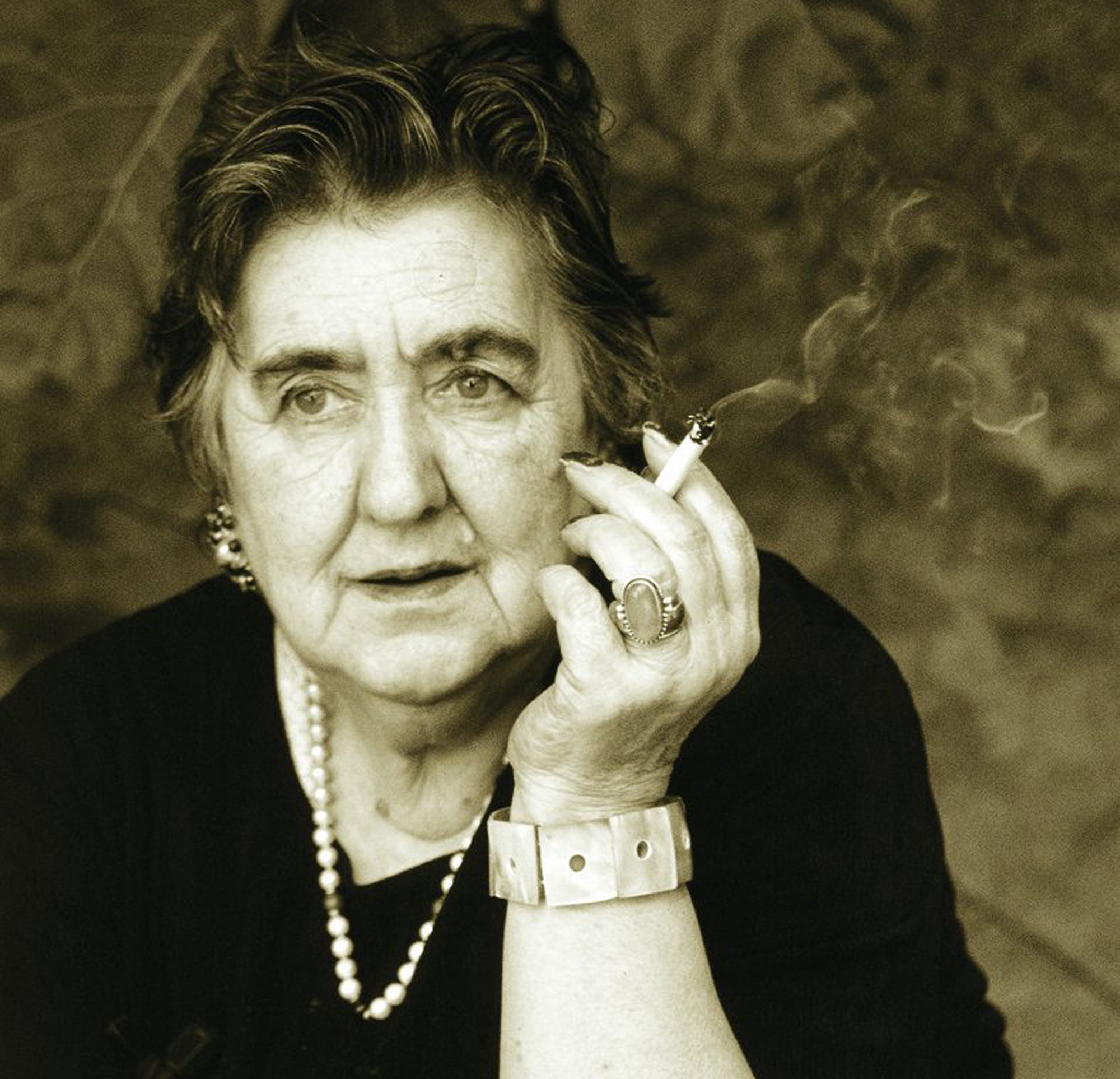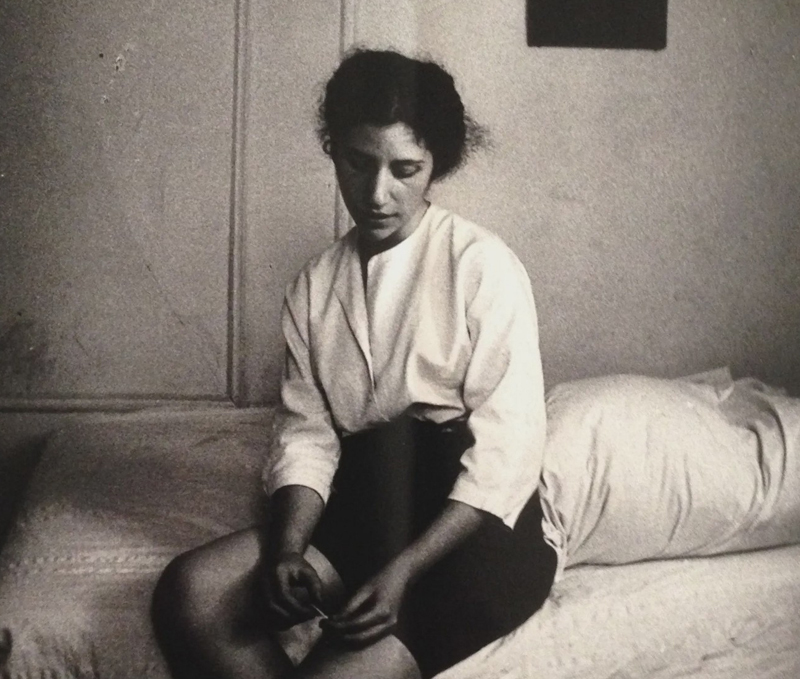Do the Israelis dream of Nazi women?
- The State of Israel has just turned 70 years old, and in recent weeks several media outlets have referred to the literary appearance of this phenomenon, while on the international pages they reported the deceased Palestinians. However, a review of the last seven decades of Israeli fiction has not mentioned a strange phenomenon in its literature: Stalag fiction. In the early 1960s, erotic literature set in the Nazi prison camps featured thousands of readers in the Zionist state.

In 1961, the trial of the Nazi criminal Adolf Eichmann began in Jerusalem. Most Israelis followed the evidence of this case with great attention. Listen to witness testimonies and participate in the II Congress of Victims of Terrorism. Through this trial they met or reremembered some of the most violent mass killings in the World War.
Probably the most significant book about this trial is Eichman in Jerusalem (Classic Collection, 2007), by Hannah Arendt. The essay makes us think of the “vanity of evil”, showing that Eichmann did not express feelings of hatred or guilt in the judgment, nor a particularly anti-Semitic attitude. The SS member, responsible for the deaths of thousands of Jews, only stated that he had done "his job." Eichmann was closer to the game of a gray official than to an animal, according to Arendt wrote: “Even for all the efforts of the prosecutor, in the trial everyone saw that the man was not a ‘monster’, but it was very difficult not to think if he was not a clown.”
Trial against Adolf Eichmann
II. Israel aroused its curiosity about the World War and multiplied popular literature on the subject, including the genus Stalag, which combined war and eroticism.
Arendt's book provoked controversy over the criticism made by the State of Israel of the orientation of this trial. He lost several people and was also accused of not being sensitive to the victims of the Holocaust. Israeli readers needed other kinds of stories, which left less room for doubt. And at the same time, taking advantage of the interest that the trial aroused among the citizens, the II Congress of Deputies was launched. Many of the popular literature related to the World War began to come to the hands of Israeli readers. According to researcher Eli Eshed in an article that analyzes the literature Stalag, most of the translated books, in which the authors report what they lived in the Nazi camps when they were prisoners of war, offering narratives of adventures.
The wounds were still alive and the powers that controlled the state wanted a public account between red lines: the environment conditioned the II a lot. Writing in the World War, but the public's curiosity pushed publishers to rely more and more on war-related publications. In addition, these books were published in a new format in colorful cover editions that were sized to fit in the pocket, until then the scope of detective novels, western gender books or hero stories like Tarzan.
Although in most cases these are Manichean narratives based on honest and evil characters, these books began to appear some loopholes that described, for example, the “human” behavior of some Nazis with people who had prisoners. In the war there were also “other things” beyond the cruel sterile: this was expressed by several books that were sold with great success. The bases were ready to make the next leap.
Sexual fantasies with Nazis
Within this proliferation of pocket books in the 1960s, content of greater sexual freedom gradually began to appear. The novelty was evident, since, according to Eshede, sex was an absolute taboo for the Israeli post-war literature. And in 1961, the work that would revolutionize the panorama of the bookstores that were sold in the newsrooms, the first number of a curious phenomenon, appeared: Step 13. On the cover of the novel was the name of a servant named “Yanshuf”, an editor, pseudonym, behind which was Ezra Narkis, a member of the editorial Elephant, who since the mid-1950s was in business. The writer was a man named Mike Baden, an alias of Israeli writer Eli Kedar. Kedar had already written a book set out in the camps that the Nazis have set in motion for prisoners of war, starring sadistic guards. In Stalag 13, however, there was a novelty: the guards were women.
Most of the novels of the genus Stalag related the story of an allied soldier who was in power of Nazi sadic women.
The book came out as a true testimony, suggesting that Baden had been a war pilot. In history, the Nazis capture it and take it to an enclosure where the sexual perversion of the women guarding it is subjected. In addition, investigator Eshed has pointed out that the novel also depicts lesbian sexual intercourse among the vigilantes, among the torture of inmates who are inflicted.
He sold thousands of copies. A new genre emerged: the erotic novels set in the prisoner of war camps organized by the Nazis. In the illustrations on the covers of the books, Nazi women were dressed in rigid uniforms, with wide spikes and the appearance of dominatrix. And although the sexual scenes from the first books of the genus Stalag can be quite naïve to the current reader, they managed to provoke the Israeli readers of the time.
Once the formula was invented, several publishers that published popular literature repeated over and over again, with small variations. The Stalag books almost always tell the same story: a British or American soldier falls into the hands of the Germans, is taken prisoner to an enclosure and there the cruel Nazi torturers savagely until at the end of history he manages to liberate his protagonists and avenge himself of his guards in scenes of extreme sexual violence.
One of the few exceptions and, according to Eshede, the best work of the genre Stalag, is the 1963 novel Ni zen Stalage, published by Meron Uriel under the pseudonym of Martin Rosenberg. In this case, it's women who are prey, not men. And history is told from the point of view of the Nazi officer who controls the camp: torture its victims with great indifference, more worried about their rivalry of power with other nations. This brutality without moral worries and the thirst for authority that it shows, make a game of mirrors, according to the researcher, with the figure of Eichmann.

Official pornography and literary pornography
The Stalag phenomenon had a short trajectory, since two years after its publication such books were banned in Israel. Subsequently, the editors who published these types of materials were condemned for “spreading pornography” and dedicated themselves to seizing police books, condemning their circulation to second-hand bookstores, far from the newsstands, opened a window of success. I was the whore of the law that hit these books after Colonel Schultz's novel, the private whore: for the first time a Jewish character appeared in an official Nazi novel. That was going too far at that time and the State buried the genre.
Israeli film director Ari Libsker believes that the imaginary that the State of Israel passed on the Holocaust was also pornographic and that the Stalag fiction helped the young people of the Zionist state to face the tragic.
After almost 40 years hiding stories from Israeli literature, in 2007 Director Ari Libsker released the documentary Stalag, which again turns these stories from the B series into conversation issues. In statements to the newspaper The Times of Israel, Libsker explained the strange situation experienced by other Israelis of his generation: being the grandson of Jews who survived the murder of Nazi masses, the concentration camp and the unknown war, he learned in school what was Jewish extermination. Images of brutality, often starred by naked women, were often exposed in class – among other things, the students were shown the thousands of corpses stacked in a mass grave of the Bergen–Belsen concentration camp or the women who were stripped by the Nazis in Latvia before being slaughtered to report what the Jews had suffered. “The memory of the Holocaust became pornography, everyone focused on graphic things and horrors,” Libsker explained. In his view, II. The success of the Stalag genre was related to this official account of the World War. “People had to cope with the trauma and the young people used Stalags to do so.”
In the opinion of others, Stalag achieved that success, as these books were almost the only porn literature in a state that censored sexual content. There are also those who make psychological interpretations on the subject: the Israeli public was looking in these stories for the eroticism of evil, in a way affected by the Stockholm syndrome. It remains to be investigated, for example, why this gender identified the dominant women with the Nazis who were the supreme enemy of the Jews.
However, 70 years after the founding of the State of Israel, Stalag remains an almost latent phenomenon of fiction, which brought sadism, eroticism, death and morbid, as if the official cultural memory of the Zionist state did not want to recall. Is it because it makes them feel guilty? What if that were the case, wouldn't he be guilty of other things?
Ekain honetan hamar urte bete ditu Pasazaite argitaletxeak. Nazioarteko literatura euskarara ekartzen espezializatu den proiektuak urteurren hori baliatu du ateak itxiko dituela iragartzeko.
Aste honetan aurkeztu da Joseph Brodskyk idatzitako Ur marka. Veneziari buruzko saiakera. Rikardo Arregi Diaz de Herediak itzuli eta Katakrak argitaletxeak publikatu du poeta errusiar atzerriratuari euskarara itzuli zaion lehen liburua.
"There were women, there they were, I met them, but their families locked them in the mental hospital, put them in electroshock. In the 1950s, if you were a man, you could be a rebel, but if you were a woman, your family would lock you in. There were some cases, and I met them... [+]
Gauza garrantzitsua gertatu da astelehen honetan literatura euskaraz irakurtzea atsegin dutenentzat: W. G. Sebalden Austerlitz argitaratu du Igela argitaletxeak. Idoia Santamariak egindako itzulpenari esker, idazle alemaniarraren obrarik ezagunena nobedadeen artean aurkituko du... [+]
Asteazken honetan aurkeztuko dituzte Erein eta Igela argitaletxeek Literatura Unibertsala bildumako hiru lan berriak, tartean Maryse Condéren Bihotza negar eta irri (ene haurtzaroko istorio egiazkoak). Joxe Mari Berasategik euskaratua, idazle guadalupearraren obra... [+]
Wu Ming literatur kolektiboaren Proletkult (2018) “objektu narratibo” berriak sozialismoa eta zientzia fikzioa lotzen ditu, Sobiet Batasuneko zientzia fikzio klasikoaren aitzindari izan zen Izar gorria (1908) nobela eta haren egile Aleksandr Bogdanov boltxebikearen... [+]

























